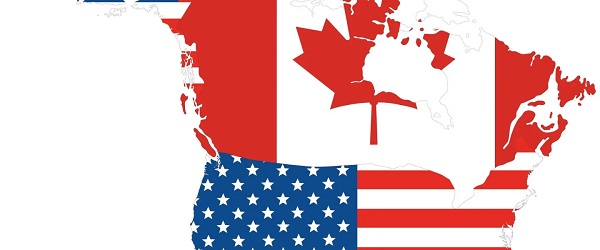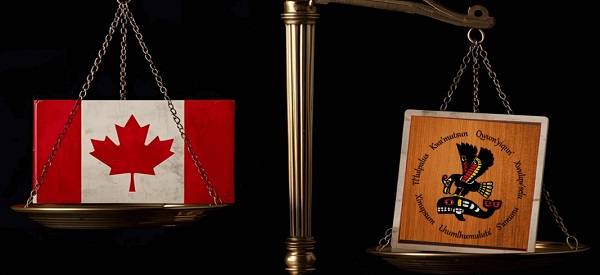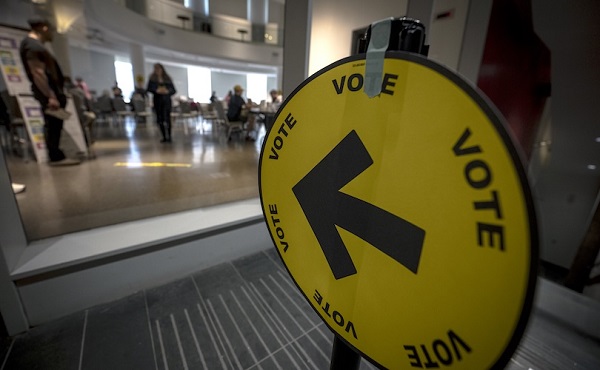Fraser Institute
Métis will now get piece of ever-expanding payout pie

From the Fraser Institute
By Tom Flanagan
The history of Ile-à-la-Crosse (IALC) in northern Saskatchewan goes back to 1776, when Thomas Frobisher established a fur trading post. Catholic Oblate missionaries arrived in 1846 and founded a small day school the next year, which was turned into a boarding school in 1860. Louis Riel’s sister Sara taught there until she died of TB in 1883. Under various names and at various locations, the school survived until the early 1970s.
The students were mainly Métis from northern Saskatchewan, with a sprinkling of Indian and white children. It was never an Indian Residential School (IRS) in the legal sense, though the federal government did at times make financial contributions proportional to the small number of status Indian children who attended. The school was mainly supported by the Oblate order and the Grey Nuns, with contributions from the province of Saskatchewan in later years.
Because the school was not an IRS, those who had attended were excluded from the IRS Settlement Agreement negotiated by Paul Martin’s government in 2005 and implemented by Stephen Harper’s government afterwards. Most students had been Métis, and the Settlement Agreement generally excluded Métis who had attended mission boarding schools that were not IRS. Wanting to share in the $5 billion financial compensation provided by the Agreement, the IALC students started legal action, using Tony Merchant’s law firm. Merchant, however, moved too slowly for the complainants, so the Sotos firm started another class action in 2022.
Following the “resistance is futile” policy enunciated by Jodi Wilson-Raybould when she was minister of justice, the federal government had already decided not to litigate, having signed in 2019 a memorandum of understanding to negotiate the claims. In March 2025, the federal government reached an agreement-in-principle with IALC students, which will go before a federal court judge for approval in January 2026. Saskatchewan announced its own agreement-in-principle in September, which will also go before the federal court.
Canada is putting up $27 million and Saskatchewan $40 million for individual compensation. With an estimated 600-700 “survivors,” this equates to individual payouts of about $100,000 apiece. This is admittedly guesswork, because neither agreement-in-principle has been published. News reports indicate that “families” will be involved in the compensation, so a larger number of claimants may materialize.
The federal news release says that compensation is being paid for “cultural loss abuse,” which includes loss of proficiency in the Cree and Michif languages spoken by the Métis in that area. Sexual and physical abuse are not mentioned, even though “survivors” claim to have been abused. Payments will be made to all who attended, as with the federal day school settlement and the “common experience” payment in the IRS settlement.
In the world of government, the joint payout of $67 million is a penny-ante affair, but the long-term implications are much greater. There are tens of thousands of Métis adults who attended mission boarding schools, both Protestant and Catholic, that were not considered IRS and were not admitted to the IRS Settlement Agreement. For them, the IALC settlement is like a dam breaking, setting a precedent for compensation. Class action law firms will commence new actions. Individual cases will be small, but there will be so many of them that the federal government will probably consolidate them into one multi-billion-dollar settlement, and the provinces will fall into line.
When Prime Minister Harper decided to implement the IRS settlement Agreement, he thought it would bring peace on the Indigenous front, allowing the government to move forward. It was an understandable hope, but in fact that decision unleashed a series of class actions that have cost taxpayers more than $50 billion and rising. When Harper was in power, he kept the lid on; but payments exploded after Justin Trudeau became prime minister in 2015 and made Wilson-Raybould minister of justice. Her instruction to Department of Justice lawyers to negotiate rather than litigate, which is still in force, caused resistance to Indigenous class actions to collapse and facilitated enormous payouts culminating in the $40 billion-plus child-care settlement. Now the Métis will get their piece of this ever-expanding payout pie.
Business
US government buys stakes in two Canadian mining companies

From the Fraser Institute
Prime Minister Mark Carney recently visited the White House for meetings with President Donald Trump. In front of the cameras, the mood was congenial, with both men complimenting each other and promising future cooperation in several areas despite the looming threat of Trump tariffs.
But in the last two weeks, in an effort to secure U.S. access to key critical minerals, the Trump administration has purchased sizable stakes in in two Canadian mining companies—Trilogy Metals and Lithium Americas Corp (LAC). And these aggressive moves by Washington have created a dilemma for Ottawa.
Since news broke of the investments, the Carney government has been quiet, stating only it “welcomes foreign direct investment that benefits Canada’s economy. As part of this process, reviews of foreign investments in critical minerals will be conducted in the best interests of Canadians.”
In the case of LAC, lithium is included in Ottawa’s list of critical minerals that are “essential to Canada’s economic or national security.” And the Investment Canada Act (ICA) requires the government to scrutinize all foreign investments by state-owned investors on national security grounds. Indeed, the ICA specifically notes the potential impact of an investment on critical minerals and critical mineral supply chains.
But since the lithium will be mined and processed in Nevada and presumably utilized in the United States, the Trump administration’s investment will likely have little impact on Canada’s critical mineral supply chain. But here’s the problem. If the Carney government initiates a review, it may enrage Trump at a critical moment in the bilateral relationship, particularly as both governments prepare to renegotiate the Canada-U.S.-Mexico Agreement (CUSMA).
A second dilemma is whether the Carney government should apply the ICA’s “net benefits” test, which measures the investment’s impact on employment, innovation, productivity and economic activity in Canada. The investment must also comport with Canada’s industrial, economic and cultural policies.
Here, the Trump administration’s investment in LAC will likely fail the ICA test, since the main benefit to Canada is that Canadian investors in LAC have been substantially enriched by the U.S. government’s initiative (a week before the Trump administration announced the investment, LAC’s shares were trading at around US$3; two days after the announcement, the shares were trading at US$8.50). And despite any arguments to the contrary, the ICA has never viewed capital gains by Canadian investors as a benefit to Canada.
Similarly, the shares of Trilogy Minerals surged some 200 per cent after the Trump administration announced its investment to support Trilogy’s mineral exploration in Alaska. Again, Canadian shareholders benefited, yet according to the ICA’s current net benefits test, that’s irrelevant.
But in reality, inflows of foreign capital augment domestic savings, which, in turn, provide financing for domestic business investment in Canada. And the prospect of realizing capital gains from acquisitions made by foreign investors encourages startup Canadian companies.
So, what should the Carney government do?
In short, it should revise the ICA so that national security grounds are the sole basis for approving or rejecting investments by foreign governments in Canadian companies. This may still not sit well in Washington, but the prospect of retaliation by the Trump administration should not prevent Canada from applying its sovereign laws. However, the Carney government should eliminate the net benefits test, or at least recognize that foreign investments that enrich Canadian shareholders convey benefits to Canada.
These recent investments by the Trump administration may not be unique. There are hundreds of Canadian-owned mining companies operating in the U.S. and in other jurisdictions, and future investments in some of those companies by the U.S. or other foreign governments are quite possible. Going forward, Canada’s review process should be robust while recognizing all the benefits of foreign investment.
Business
Federal Budget 2025: A responsible media would ensure Canadians know about the dismal state of federal finance

From the Fraser Institute
By Jake Fuss and Grady Munro
From 2014 to 2024, gross government debt (including federal, provincial and local governments) increased from 85.5 per cent of the economy (measured by GDP) to 110.8 per cent—a larger increase than any other G7 country. When debt grows faster than the economy, government finances are unsustainable.
Ahead of the Carney government’s long-awaited first budget scheduled for Nov. 4, a recent CBC commentary described the long-standing debate about the federal deficit and the state of federal finances as “something of a phoney war.” And that calls to balance the budget—expressed today and over the last decade—have lacked any serious discussion about the trade-offs between allowing deficits to persist versus balancing the budget.
While there’s certainly something to be said about the political theatre that regularly dominates the House of Commons—which we agree focuses too often on scoring political points instead of adequately assessing the merits of policy—it’s wrong to downplay concerns about the state of federal finances. Such concerns aren’t “phoney.”
Consider this. From 2014 to 2024, gross government debt (including federal, provincial and local governments) increased from 85.5 per cent of the economy (measured by GDP) to 110.8 per cent—a larger increase than any other G7 country. And federal gross debt increased from 53.0 per cent of the economy in 2014/15 to a projected 70.0 per cent in 2024/25. When debt grows faster than the economy, government finances are unsustainable. And the Carney government seemingly plans to continue this same approach.
In other words, the government plans to continue to spend more than it collects in revenue, continue to run massive deficits, and continue to rack up large amounts of debt.
Why should Canadians care?
Because the costs of government debt land squarely on their backs. For example, when government debt levels rise, the cost of debt interest often also rises. This year the federal government will spend a projected $54.5 billion on debt interest costs—equivalent to what it sends to the provinces for health care. Moreover, when governments borrow money, they can help drive up the cost of borrowing by increasing demand for the limited pool of savings that both government and the private sector compete for—making it more expensive for a family to take out a mortgage or businesses to attract investments. And to pay for today’s debt accumulation, governments in the future may raise taxes—a burden that will fall disproportionately on younger generations.
Again, given this alarming deterioration in the state of government finances over the last decade and the costs it imposes on Canadians, there’s nothing disingenuous about calling for more fiscal discipline from Ottawa.
Of course, getting federal finances back in order is no small task—the Trudeau government’s forays into areas of provincial jurisdiction (which carry huge price tags), combined with Carney’s massive new spending commitments for defence and other programs, mean the government cannot balance the budget without significant trade-offs. In the past, the federal government has overcome similar fiscal circumstances by committing to balance the budget and outlining a clear plan to achieve this goal. The Carney government should heed these lessons and apply them in its upcoming budget.
-

 Red Deer1 day ago
Red Deer1 day agoYour last minute election prep: Common Sense Red Deer talks to the candidates
-

 Business1 day ago
Business1 day agoJudges are Remaking Constitutional Law, Not Applying it – and Canadians’ Property Rights are Part of the Collateral Damage
-

 City of Red Deer12 hours ago
City of Red Deer12 hours agoPlan Ahead: Voting May Take a Little Longer This Election Day
-

 Business2 days ago
Business2 days agoTrump Blocks UN’s Back Door Carbon Tax
-

 Media1 day ago
Media1 day agoCanada’s top Parliamentary reporters easily manipulated by the PMO’s “anonymous sources”
-

 Business2 days ago
Business2 days agoTrump Admin Blows Up UN ‘Global Green New Scam’ Tax Push, Forcing Pullback
-

 Daily Caller2 days ago
Daily Caller2 days agoTrump urges Putin, Zelenskyy to make a ‘deal’
-

 espionage1 day ago
espionage1 day ago“Suitcase of Cash” and Secret Meeting Deepen Britain’s Beijing Espionage Crisis






